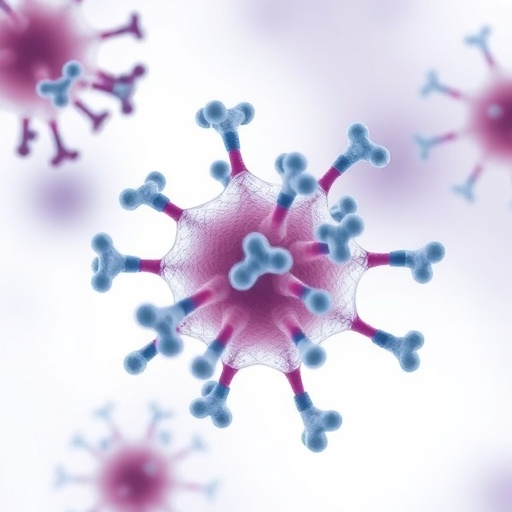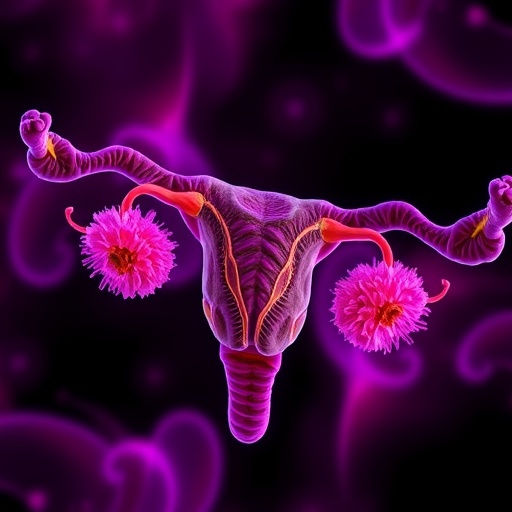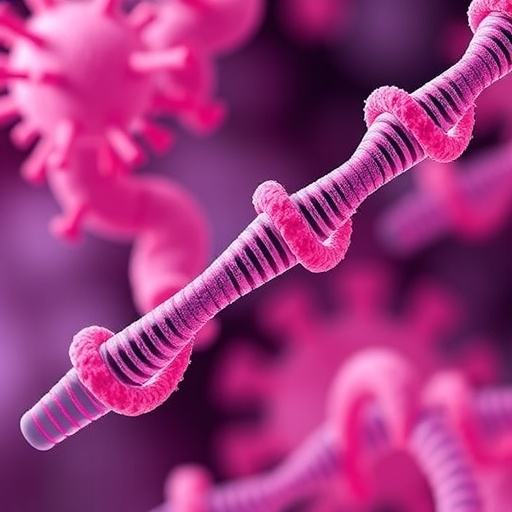Recent research conducted by Zhang et al. has unveiled critical insights into the sex differences in response to strychnine poisoning in rats, revealing significant implications for understanding toxicological effects based on gender. The study, published in Biology of Sex Differences, harnesses a unique combination of metabolic kinetics and metabolomics to shed light on the biochemical pathways impacted by strychnine, a potent neurotoxin that acts primarily on the spinal cord and brainstem by blocking glycine receptors, leading to severe neuromuscular symptoms.
Understanding gender-specific responses to toxins like strychnine is essential for developing gender-targeted treatment protocols. This newfound understanding is vital, as intersex variations can lead to diverse reactions to toxic agents, complicating treatment strategies in clinical and environmental toxicology. The research scrutinizes how male and female rats metabolize and respond to strychnine, opening a pathway toward acknowledging biological differences in pharmacodynamics and toxicity.
Zhang and colleagues commenced their study by detailing the metabolic profiles in both male and female rats post-strychnine exposure, revealing substantial contrasts. Utilizing advanced metabolomics techniques, the researchers were able to track metabolites associated with potential neurotoxic mechanisms. This analysis not only harnesses traditional biochemical assays but also includes cutting-edge techniques like mass spectrometry, allowing for an unprecedented depth of insight into the metabolic disruptions triggered by strychnine.
One of the pivotal findings of this study was the differential time course in metabolite accumulation between genders. Male rats exhibited distinct metabolic pathways activation compared to their female counterparts; this divergence could elucidate the varying susceptibilities to strychnine. In male rats, certain metabolites implicated in excitatory neurotransmission exhibited increased levels, whereas females demonstrated a heightened response in glycolytic pathways, indicating a significant metabolic shift that may impact recovery times and overall resilience to strychnine intoxication.
Moreover, the study not only highlights the biochemical discrepancies between male and female rodents but also raises concerns about the existing paradigms in toxicology research, which traditionally have overlooked sex as a biological variable. This research could radically transform our understanding of toxicity and treatment efficacy in poisoned individuals, presenting the compelling argument for sex-specific assessments in clinical toxicology.
The metabolic kinetic analysis further suggests that the pathways activated post-strychnine exposure are intricately linked to the observed clinical symptoms. The identification of specific metabolites that correlate with the severity of symptoms could pave the way for the development of biomarkers that predict patient outcomes in cases of strychnine poisoning. The implications of this study reverberate beyond the realm of mere toxicology, potentially informing drug development and therapeutic strategies.
Environmental concerns about strychnine usage in agriculture and pest control accentuate the need for thorough understanding and management of its toxic effects. With emerging evidence that male and female species respond differently, regulatory frameworks may require reevaluation based on sex disparate responses to this substance. This research underscores that one-size-fits-all approaches cannot hold when dealing with harmful agents; instead, a more nuanced view considering sex differences is paramount for public health safety.
Zhang et al. utilized state-of-the-art metabolomic analysis to identify key biochemical pathways altered in response to strychnine in male and female rats. The approach illustrates how high-throughput capabilities can unveil complex interactions at the metabolic level, which may have been undetectable through traditional methods. As a result, their findings underline the necessity of incorporating systems biology approaches into toxicology research to improve the understanding of gender-specific vulnerabilities to toxins.
The implications extend to broader environmental health issues, as understanding the mechanisms by which sex influences detoxification processes is essential in evaluating the risks of chemical exposures commonly experienced in both urban and agricultural settings. The research inevitably raises questions about the adequacy of current health assessments, primarily if they are primarily based on male models when evidence suggests significant differences may exist.
As this research progresses, it will be vital for further studies to delve deeper into the molecular underpinnings that govern these observed sex differences. Future work looking at genetic factors, hormonal influences, and behavioral responses could help to construct a comprehensive picture of how strychnine affects male and female physiology differently over time. This would not only broaden scientific understanding but also improve clinical outcomes for individuals affected by poisoning.
In the quest for establishing a detailed framework for understanding sex differences in toxicology, Zhang et al.’s study serves as a groundbreaking avenue that can help bridge the gap between research and practical application in treating poisoning cases. The call for sex-disaggregated data goes beyond mere academic interest; it is an essential facet of public health research that ensures all individuals receive appropriate care tailored to their unique biological profiles.
The narrative established through this research heralds a new dawn in toxicological studies, emphasizing the need for sensitivity to sex differences in all facets of biomedical research. As the scientific community continues to unravel the complexities of metabolic responses to toxic agents like strychnine, tailored prevention strategies and treatment modalities can evolve, fundamentally enhancing patient care and outcomes.
Such thought-provoking studies like Zhang’s stand as a reminder that the field of toxicology is ever-evolving, constantly requiring adaptation to new findings that reflect the intricate relationships between biology, environment, and health. It is through work like this that society can hope to mitigate risks associated with toxic exposures, ultimately leading to safer and healthier environments for all.
Strong consideration of these factors could transform the landscape of toxin management and create a more equitable approach to healthcare, ensuring that both men and women receive informed, evidence-based care when faced with toxicological threats.
Subject of Research: Analysis of sex difference in response to strychnine intoxication in rats.
Article Title: Analysis of sex difference in strychnine-intoxicated rat based on the combination of metabolic kinetics and metabolomics.
Article References: Zhang, W., Wang, C., Liu, H. et al. Analysis of sex difference in strychnine-intoxicated rat based on the combination of metabolic kinetics and metabolomics. Biol Sex Differ 16, 100 (2025). https://doi.org/10.1186/s13293-025-00784-7.
Image Credits: AI Generated
DOI: https://doi.org/10.1186/s13293-025-00784-7
Keywords: Strychnine, toxicology, sex differences, metabolomics, metabolic kinetics, rat model, neurotoxicity, public health, environmental health.
Tags: biochemical pathways of strychninegender-specific responses to neurotoxinsgender-targeted treatment protocolsglycine receptor blockade effectsimplications for clinical toxicologyintersex variations in toxin responsemale versus female rat metabolismmass spectrometry in toxicology researchmetabolic kinetics in toxicologymetabolomics and neurotoxicologyneuromuscular symptoms of strychnine poisoningsex differences in strychnine toxicity





